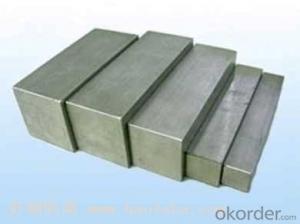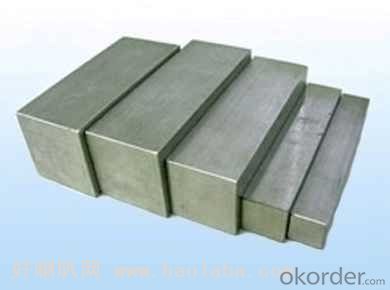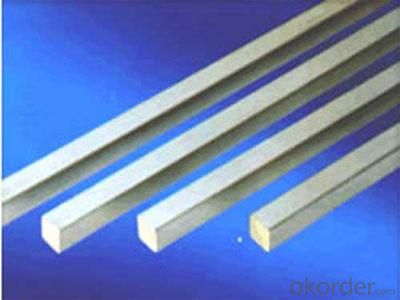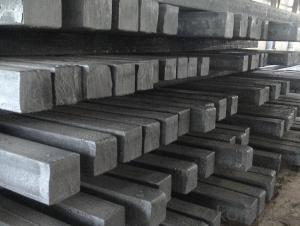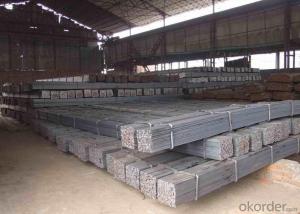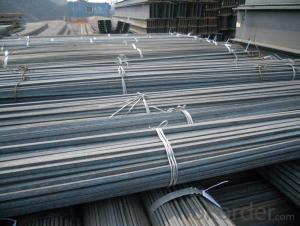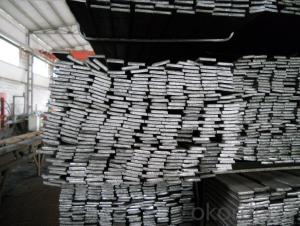EN10025 Hot rolled steel chequer plate for construction
- Loading Port:
- Tianjin
- Payment Terms:
- TT or LC
- Min Order Qty:
- 25 m.t.
- Supply Capability:
- 10000 m.t./month
OKorder Service Pledge
OKorder Financial Service
You Might Also Like
Product Description:
OKorder is offering EN10025 Hot rolled steel chequer plate for construction at great prices with worldwide shipping. Our supplier is a world-class manufacturer of steel, with our products utilized the world over. OKorder annually supplies products to European, North American and Asian markets. We provide quotations within 24 hours of receiving an inquiry and guarantee competitive prices.
Product Applications:
EN10025 Hot rolled steel chequer plate for construction are ideal for structural applications and are widely used in the construction of buildings and bridges, and the manufacturing, petrochemical, and transportation industries.
Product Advantages:
OKorder's EN10025 Hot rolled steel chequer plate for construction are durable, strong, and resist corrosion.
Main Product Features:
· Premium quality
· Prompt delivery & seaworthy packing (30 days after receiving deposit)
· Corrosion resistance
· Can be recycled and reused
· Mill test certification
· Professional Service
· Competitive pricing
Product Specifications:
square steel billet
1.3SP, 5SP
2.terms of payment: L/C at sight
3.size: 120*120mm
4.length: 5.8~12m
square steel billet
Specifications
square steel billets
1)We procure world class quality steel billets which meets the specific requirements of the clients
The Billets produced by the company can be broadly divided into three main types i.e.
M.S. Billets
CRS Billets
Special Alloy Billets
M.S. Billets are used for rolling of TMT Re-Bars of Fe415 and Fe500 Grade and various other structural steel products.
CRS Billets are used fro rolling of CRS TMT Re-Bars.
Special Alloy Billets are used for rolling of any special grade TMT Re-Bars like Earthquake resistant TMT Re-Bars and for special grade structural steel products.
The following are the sizes of Billets available with Shyam Steel Industries Ltd.:
100 X 100
120x120
150 X 150
Physical Properties:
Description
As per IS 2830
Shyam Billets
Bend (max.) 5 mm per meter >= 5 mm per meter
Carbon (max.) 3mm per meter >= 3 mm per meter
Length 3 mt - 13 mt 3 mt - 9 mt
Chemical Properties:
Ladle Analysis:
Designation
Carbon
Manganese
C15 0.12-0.18 0.30-0.60
C18 0.15-0.21 0.30-0.60
C20 0.17-0.23 0.30-0.60
C15 MMn 0.12-0.18 0.60-1.00
C18 MMn 0.15-0.21 0.60-1.00
C20 MMn 0.17-0.23 0.60-1.00
C15 HMn 0.12-0.18 1.00-1.50
C18 HMn 0.15-0.21 1.00-1.50
C20 HMn
0.17-0.23 1.00-1.50
Billets of different designations are manufactured in three different grades namely A, B, C having sulphur, phosphorous content (on ladle analysis) and carbon equivalent as follows:
Chemical Analysis:
Grade Sulphur Phosphorous Carbon Equivalent (CE)1
Max Max Max
A 0.05 0.05 0.42
B 0.045 0.045 0.41
C 0.04 0.04 0.39
Q1: What makes stainless steel stainless?
A1: Stainless steel must contain at least 10.5 % chromium. It is this element that reacts with the oxygen in the air to form a complex chrome-oxide surface layer that is invisible but strong enough to prevent further oxygen from "staining" (rusting) the surface. Higher levels of chromium and the addition of other alloying elements such as nickel and molybdenum enhance this surface layer and improve the corrosion resistance of the stainless material.
Q2: Can stainless steel rust?
A2: Stainless does not "rust" as you think of regular steel rusting with a red oxide on the surface that flakes off. If you see red rust it is probably due to some iron particles that have contaminated the surface of the stainless steel and it is these iron particles that are rusting. Look at the source of the rusting and see if you can remove it from the surface.
Q1: How do we guarantee the quality of our products?
A1: We have established an advanced quality management system which conducts strict quality tests at every step, from raw materials to the final product. At the same time, we provide extensive follow-up service assurances as required.
Q2: What makes stainless steel stainless?
A2: Stainless steel must contain at least 10.5 % chromium. It is this element that reacts with the oxygen in the air to form a complex chrome-oxide surface layer that is invisible but strong enough to prevent further oxygen from "staining" (rusting) the surface. Higher levels of chromium and the addition of other alloying elements such as nickel and molybdenum enhance this surface layer and improve the corrosion resistance of the stainless material.

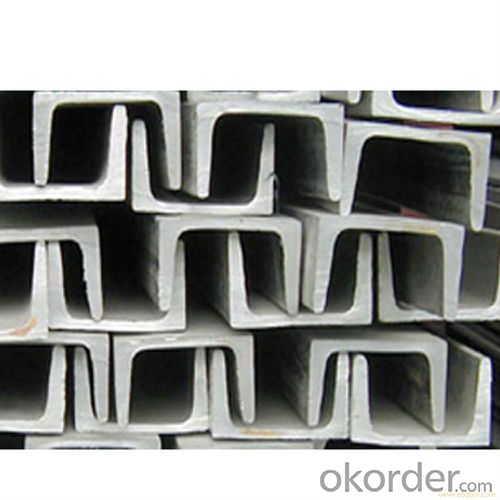
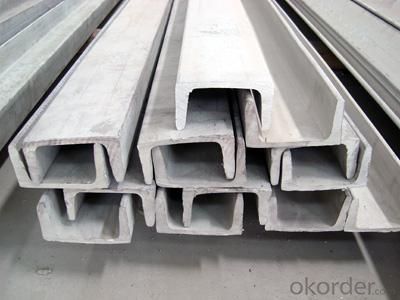
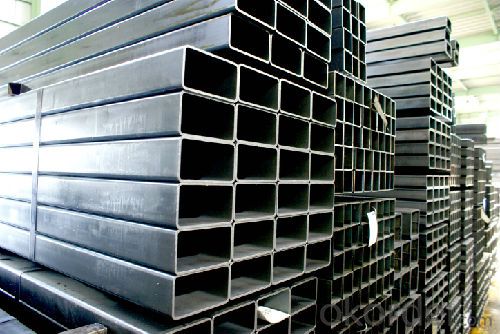
- Q: What are the different types of steel squares used in metalworking?
- In metalworking, steel squares are essential tools used for measuring, marking, and checking right angles in various applications. There are several types of steel squares commonly used in metalworking, each with its own specific features and advantages. 1. Engineer's Square: This type of square is the most commonly used in metalworking. It typically has a blade that is longer than its beam, allowing for easier measurement of larger workpieces. Engineer's squares are known for their accuracy and are ideal for general layout work. 2. Machinist's Square: Machinist's squares are precision tools used for extremely accurate measurements. They have a hardened blade and a heavier construction than engineer's squares, providing improved stability and accuracy. Machinist's squares are commonly used for setup and alignment tasks. 3. Combination Square: Combination squares are versatile tools that combine a square, level, and protractor in one device. They usually consist of a steel rule with a sliding head that can be locked at different angles. Combination squares are useful for measuring, marking, and checking angles, as well as for setting depths and heights. 4. Try Square: Try squares, also known as tri-squares, have a shorter blade and beam than engineer's squares. They are primarily used for checking and marking right angles on smaller workpieces, such as woodworking projects. Try squares are lightweight and easy to handle. 5. Miter Square: Miter squares are specialized squares used for accurately marking and cutting angles for miter joints. They have adjustable blades that can be set at different angles. Miter squares are commonly used in woodworking and carpentry, but they can also be useful in metalworking when precise angled cuts are required. These are just a few examples of the different types of steel squares used in metalworking. Each square serves a specific purpose, providing metalworkers with the necessary tools to ensure accurate measurements, precise marking, and the creation of well-aligned structures.
- Q: Can a steel square be used for checking the levelness of countertops?
- No, a steel square cannot be used for checking the levelness of countertops. A steel square is primarily used for measuring angles and ensuring the accuracy of right angles. To check the levelness of countertops, a level tool should be used. A level is a device with a bubble vial filled with liquid that allows you to determine if a surface is perfectly horizontal or vertical. This is important for countertops to ensure that they are level and provide a stable and even surface.
- Q: How do you use a steel square to determine angles for chair legs?
- To use a steel square to determine angles for chair legs, you will first need to understand the markings and measurements on the square. A steel square typically has two parts: the body and the tongue. The body is a flat, rectangular piece, while the tongue is a smaller, perpendicular arm. To determine angles for chair legs, follow these steps: 1. Start by placing the body of the steel square against one side of the chair leg, ensuring that the body is flush with the leg's surface. 2. Extend the tongue of the square along the adjacent side of the chair leg, so it is perpendicular to the body and aligned with the surface of the leg. 3. Look at the markings on the body of the steel square. The markings on the longer side of the body represent degrees, while the markings on the shorter side represent inches or centimeters. 4. Find the markings that represent the angle you want to measure. For example, if you want to determine a 90-degree angle, locate the line on the body that corresponds to 90 degrees. 5. Once you have identified the appropriate angle line, look at where the tongue intersects the body. Take note of the number on the body directly above the intersection point. 6. This number represents the angle at which the chair leg needs to be cut. Use this measurement as a guide when cutting the chair leg to ensure the desired angle is achieved. Remember to double-check your measurements and angles before making any cuts to ensure accuracy.
- Q: How do you use a steel square for marking and cutting half-blind dovetail joints?
- To achieve accurate markings and cuts for half-blind dovetail joints, the following steps should be followed when using a steel square: 1. Begin by selecting a steel square with a precise 90-degree angle. This tool will assist in ensuring accurate markings and cuts for the half-blind dovetail joints. 2. Start by marking the thickness of the dovetail joint on the end grain of the tail board and the face of the pin board. This can be accomplished by placing the steel square against the end grain of the tail board and drawing a line along the interior of the square. Repeat this process on the face of the pin board. 3. Next, the depth of the dovetail joint needs to be marked on both the tail and pin boards. Hold the steel square against the end grain of the tail board and align the blade of the square with the marked thickness line. Draw a line along the blade of the square to indicate the depth. Repeat this step on the pin board. 4. Once the thickness and depth lines are marked, position the steel square against the face of the tail board. Align the blade of the square with the marked thickness line on the pin board. This will establish a reference line for the shoulder of the dovetail joint. 5. Utilize a marking knife or pencil to trace along the blade of the steel square, marking the shoulder line on the face of the tail board. Repeat this step on the face of the pin board. 6. The angled sides of the dovetail joint can now be marked. Place the steel square against the face of the tail board, aligning the blade with the shoulder line. Draw a line along the blade to create the angle line for the dovetail. Repeat this process on the pin board. 7. With the lines marked, proceed to cut the half-blind dovetail joints using a dovetail saw or a similar cutting tool. Carefully follow the marked lines to ensure accurate and precise cuts. By utilizing a steel square for marking and cutting half-blind dovetail joints, well-fitted joints can be achieved, contributing to the strength and aesthetics of woodworking projects. Remember to measure accurately and make precise cuts for optimal results.
- Q: How do you use a steel square to check the flatness of a surface?
- To use a steel square to check the flatness of a surface, you'll need a reliable and accurate steel square, which is a tool with a ruler-like blade and a perpendicular handle. Here's a step-by-step guide on how to proceed: 1. Ensure that both the surface you want to check and the steel square are clean and free from any debris or dirt that could affect the accuracy of the measurement. 2. Place the steel square on the surface you want to check, aligning one edge of the square with the surface. 3. Observe the contact between the blade of the steel square and the surface. If the entire length of the blade is in contact with the surface without any gaps or daylight visible, it indicates that the surface is flat. 4. Move the steel square along different areas of the surface, checking for any inconsistencies. If you notice any gaps or daylight between the blade and the surface, it suggests that the surface is not flat in that particular area. 5. Pay attention to the gaps or daylight you observe. If the gaps are consistent in size, it might indicate that the surface has a slight bow or warp. However, if the gaps vary in size, it could suggest a more significant irregularity or unevenness in the surface. 6. Take note of any areas where the surface is not flat. This information can be helpful in determining the extent of the flatness issue and planning necessary corrective measures. Remember, using a steel square is not a foolproof method to measure flatness, especially for large surfaces. It is more suitable for smaller projects or initial assessments. For more precise measurements, specialized tools like straight edges or laser levels may be required.
- Q: What are some common applications of a steel square in metalworking?
- A steel square, also referred to as a framing square or carpenter's square, boasts a wide range of applications in the field of metalworking. Various functions of a steel square in metalworking encompass: 1. Measurement and marking: Metalworkers utilize steel squares to measure and mark straight lines, angles, and dimensions on metal sheets or bars. These squares provide accurate measurements, facilitating precise cuts or bends. 2. Squareness: Ensuring the accuracy of right angles is crucial, and steel squares serve as a vital tool in this regard. They can be employed to verify if two edges of a metal piece are perpendicular or to fabricate 90-degree angles when constructing metal structures. 3. Pattern layout: Steel squares are commonly employed in the layout of patterns on metal surfaces. By utilizing the square's multiple scales and markings, metalworkers can create intricate patterns or templates for metal cutting or bending. 4. Guiding cuts: Steel squares can act as guides for making straight cuts using tools such as saws or shears. By aligning the square with the cutting line, metalworkers ensure straight and accurate cuts. 5. Flatness inspection: Metalworkers can employ steel squares to assess the flatness of a metal surface. By placing the square against the metal and observing for gaps or light passing through, they can determine if the surface is flat or requires further adjustments. 6. Angle marking: Steel squares are equipped with angle markings that allow for precise measurement and marking of specific angles. This feature proves especially useful when creating precise bevels or chamfers on metal edges. 7. Layout and framing: In the realm of metalworking, steel squares find widespread use in layout and framing tasks. They aid metalworkers in planning and constructing frameworks, ensuring proper alignment of all corners and joints. 8. Alignment and assembly: Steel squares prove invaluable in aligning and assembling metal components. By utilizing the square's straight edge, metalworkers can ensure accurate and secure joining of parts. In conclusion, a steel square serves as an indispensable tool in metalworking, assisting with measurement, marking, squaring, cutting, and alignment of metal pieces. Its versatility and precision render it an essential instrument for both professional metalworkers and DIY enthusiasts.
- Q: What are some common uses of a steel square in construction?
- A steel square, also known as a framing square or carpenter's square, is a versatile and essential tool in construction. It is primarily used for measuring, marking, and verifying right angles, ensuring accurate and precise cuts and joints. Here are some common uses of a steel square in construction: 1. Layout and marking: A steel square is used to lay out and mark straight lines, angles, and perpendicular lines on various construction materials such as wood, metal, and concrete. It helps ensure precise measurements and angles for accurate cutting, drilling, and assembly. 2. Checking squareness: Steel squares are used to check if corners and joints are perfectly square, ensuring that structures, frames, and components are aligned properly. This is crucial for maintaining structural integrity and preventing issues like sagging or misalignments. 3. Cutting and shaping: The square's straight edges and angles are used as guides for cutting and shaping materials. It helps carpenters and masons make precise cuts, whether it's cutting rafters, framing studs, or marking and cutting notches and angles on different construction elements. 4. Roofing and stair construction: Steel squares are widely used in roofing and stair construction. They help layout and cut roof rafters, determine the angle and pitch of a roof, and ensure that staircases have accurate and consistent riser and tread dimensions. 5. Foundation and concrete work: Steel squares are used to ensure the right angles, levelness, and alignment of foundation footings, concrete walls, and slabs. It helps builders maintain the structural integrity of the foundation, ensuring stability and preventing future issues. 6. Checking for plumb and level: A steel square is used to check if walls, posts, and columns are perfectly vertical (plumb) or horizontal (level). This is done by placing the square against the surface and verifying if the bubble in a level or plumb-bob aligns with the reference lines on the square. 7. Laying out stairs and handrails: Steel squares are useful for laying out and marking the rise and run dimensions of stairs. They help ensure consistency and accuracy in the construction of steps and handrails, providing safety and comfort for users. Overall, a steel square is an indispensable tool in construction due to its versatility and precision. It helps carpenters, masons, and other construction professionals ensure accurate measurements, angles, and alignments, resulting in well-built and structurally sound projects.
- Q: How do you use a steel square to measure the height of a window frame?
- To use a steel square to measure the height of a window frame, you will need to follow these steps: 1. Start by positioning the steel square vertically against one side of the window frame, ensuring that it is flush against the wall. The long side of the square should be parallel to the ground. 2. Slide the square up or down until its edge aligns with the top of the window frame. Make sure that the square is still flush against the wall. 3. Once you have aligned the square with the top of the window frame, hold it firmly in place. 4. Look at the scale on the steel square to determine the measurement. The scale is typically marked in inches or centimeters, so ensure that you are using the appropriate unit of measurement. 5. Read the measurement where the top edge of the window frame aligns with the scale on the steel square. This will give you the height of the window frame. Remember to take accurate measurements and repeat the process on the other side of the window frame to verify consistency. Additionally, it is always a good practice to measure multiple times to ensure accuracy.
- Q: Can a steel square be used for checking the squareness of a roof truss?
- The squareness of a roof truss can be determined by using a steel square. A steel square, also called a framing square or carpenter's square, is a versatile construction tool. It consists of a long blade and a shorter tongue that intersect at a right angle. To check the squareness of a roof truss, simply position the steel square at the joint where the truss members meet. Align the blade along one side of the truss and the tongue along the adjacent side. This alignment will determine if the angle formed by these sides is 90 degrees or not. If the truss is square, the blade and tongue of the steel square will align perfectly with the truss sides, creating a right angle. However, if the truss is not square, the blade and tongue will not align properly, indicating that adjustments are needed. While a steel square offers a convenient and efficient method to check the squareness of a roof truss, it is important to remember that other measuring tools and techniques, such as laser levels or plumb bobs, should also be used to ensure accuracy. For complex or critical structural elements like roof trusses, it is advisable to consult a professional or engineer.
- Q: How do you use a steel square to find the length of a stair riser?
- To find the length of a stair riser, one can utilize a steel square by following these steps: 1. Begin by aligning the steel square against the vertical riser of the stair. Make sure that the long side of the square is flush with the riser, while the short side is perpendicular to it. 2. Proceed by positioning the square in a way that the short side is in line with the edge of the riser. Simultaneously, ensure that the long side extends up and over the tread of the stair. 3. Securely hold the square in place and mark the point at which the long side intersects with the stair's tread. This mark will indicate the length of the stair riser. 4. Measure the distance between the mark made and the edge of the riser using a measuring tape or ruler. This measurement will provide the exact length of the stair riser. By employing a steel square in this manner, one can accurately ascertain the length of a stair riser, which is crucial for the proper construction and safety of the stairs.
Send your message to us
EN10025 Hot rolled steel chequer plate for construction
- Loading Port:
- Tianjin
- Payment Terms:
- TT or LC
- Min Order Qty:
- 25 m.t.
- Supply Capability:
- 10000 m.t./month
OKorder Service Pledge
OKorder Financial Service
Similar products
Hot products
Hot Searches
Related keywords
